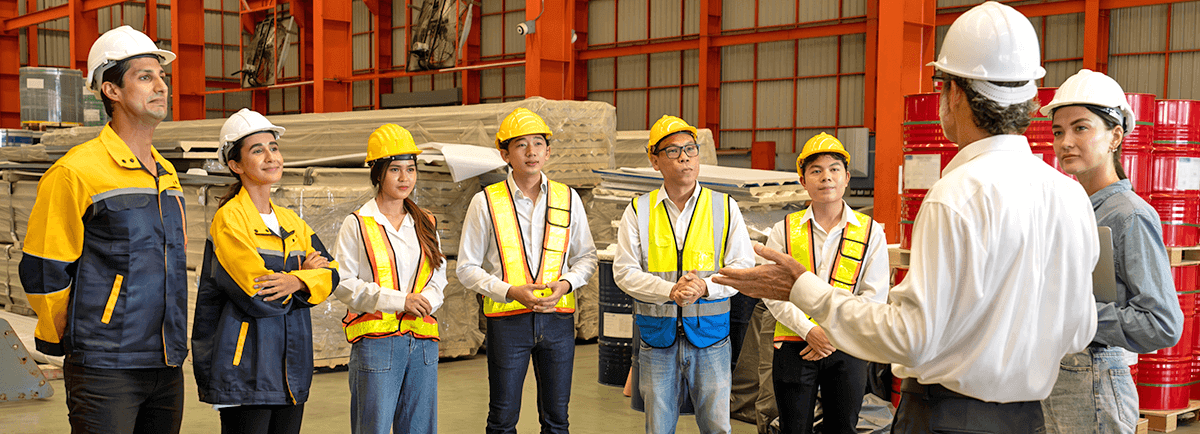
The Role of a Safety Committee in the Workplace
Imagine walking into your workplace and knowing that there’s a dedicated team focused solely on your safety. That’s the power of a safety committee. It’s a group of employees from various departments working together to ensure everyone goes home safe every day. But what exactly does a safety committee do? Let’s explore that further.
At its core, a safety committee’s job is simple: prevent accidents and keep everyone safe. But how does it achieve this? By identifying potential hazards, promoting safety awareness, and ensuring that safety policies are not just words on paper but actions everyone follows.
The committee acts as a bridge between management and employees, ensuring that safety concerns are heard and addressed promptly.
Key Responsibilities of a Safety Committee
The key responsibilities of a safety committee are vital to maintaining a safe and compliant workplace:
Conducting Safety Audits: Regular checks to spot any potential risks before they turn into incidents. These audits also help identify areas where safety practices can be improved, ensuring that the workplace remains a secure environment for everyone.
Incident Investigation: If something does go wrong, the committee dives in to find out why and how to prevent it from happening again. This process not only uncovers the root cause of incidents but also helps in developing strategies to avoid similar occurrences in the future.
Training and Education: Organizing safety training sessions to keep everyone informed and prepared. By continually educating employees, the committee fosters a culture of awareness and readiness, equipping the workforce with the knowledge they need to stay safe.
Building an Effective Safety Committee
A safety committee is more than just a group of people—it’s a cross-functional team that includes representatives from all areas of the organization. This diversity ensures that every aspect of the workplace is considered when identifying risks and implementing safety measures.
The committee’s primary goal is to actively contribute to workplace safety by conducting regular safety audits, leading training sessions, and investigating incidents. These efforts help prevent accidents and create a safer work environment for everyone.
Additionally, the safety committee plays a crucial role in ensuring the organization complies with safety regulations. By staying updated on the latest legal requirements and implementing necessary changes, the committee helps the company avoid penalties while protecting its employees.
Best Practices for an Effective Safety Committee
To be truly effective, a safety committee should:
Meet Regularly: Consistent meetings ensure that safety remains a priority. Regular gatherings also allow the committee to promptly address any emerging safety concerns or trends, keeping everyone on the same page.
Set Clear Goals: Having specific, measurable objectives keeps the committee on track. These goals should be regularly reviewed and updated to reflect the evolving safety needs of the workplace, ensuring continuous improvement.
Encourage Open Communication: Safety is everyone’s responsibility. An open-door policy helps gather valuable input from all employees, fostering a culture where everyone feels comfortable sharing safety concerns or suggestions, leading to a more proactive safety environment.
The Lasting Value of a Safety Committee
The long-term impact of a safety committee goes beyond immediate safety measures. Over time, their efforts lead to a significant reduction in workplace injuries, lower insurance costs, and a deeply ingrained safety culture. This continuous commitment to safety highlights the enduring value of having a dedicated committee.
In the long run, a well-functioning safety committee becomes an indispensable part of the organization, safeguarding its most valuable asset—its people.
If your workplace doesn’t already have a strong safety committee, now is the time to take action. Consider reviewing your current safety practices or starting a committee to ensure that safety remains a top priority. Your employees’ well-being and your company’s success depend on it.
Ben Johnson is a dedicated Customer Success Executive at Safetymint. With a strong commitment to excellence, Ben works closely with customers to ensure they fully leverage the capabilities of Safetymint to its fullest potential, aiming to significantly reduce or mitigate safety risks and incidents.




